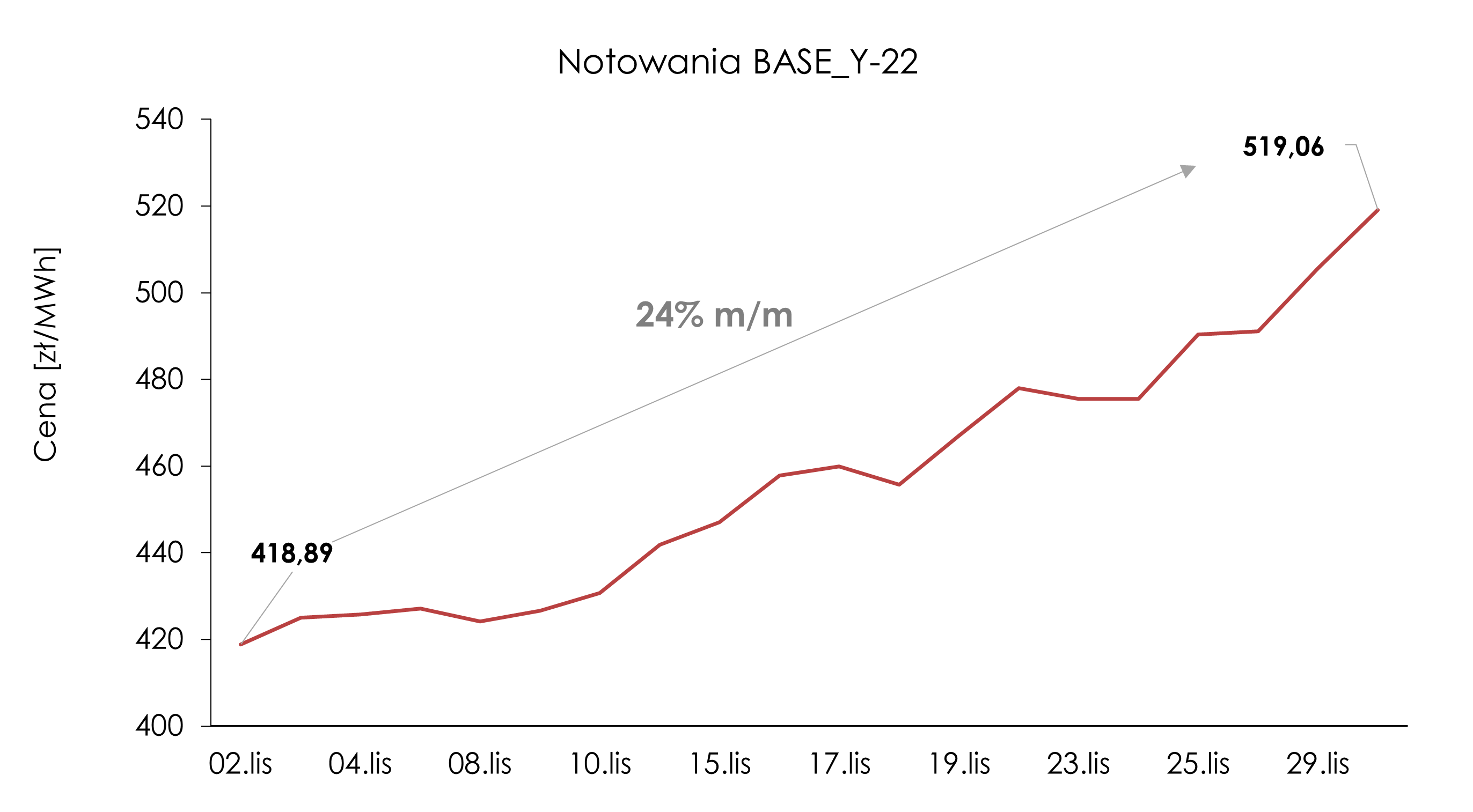After a temporary correction on the Polish Power Exchange, the prices returned to the upward trend, setting a new record at the level of PLN 745.46 / MWh on the Day-Ahead Market (23/11). Unfortunately, the domestic market was not the most expensive that day. Higher prices were recorded, for example, in Germany and France. The reason for this is the sharp increase in the prices of CO2 emission allowances, the price of which exceeded EUR 70 per ton. Only the North of Europe, where renewable energy sources dominate, has missed the price increase.
The situation in the region looked as follows.
Values in euro / MWh. The data comes from the website www.nordpoolgroup.com

One of the reasons for this is the dynamic increase in prices of CO2 emission allowances that took place in November.

Unfortunately, it quickly translated into an increase in prices in futures contracts.


KOBIZE in its latest report, “Report on the CO2 market – October”, cited Vertis’ analysis, according to which, if the upward trend continues, the prices of allowances may break the barrier of EUR 100 per ton already next year. And by the end of the EU ETS period, i.e. by 2030, the price of allowances may reach EUR 170 / ton. The alternative scenario outlined by Vertis still assumes an increase in allowance prices in the coming years, while the scale and pace of increases are much lower than those of the first variant. The price in 2022 will fluctuate around EUR 70 per ton, and by the end of the system’s lifetime it will reach EUR 110 per ton of emissions.
Unfortunately, bearing in mind that the KOBIZE report, as well as the analysis cited in it, does not capture the recent dynamic increases, we can assume that the first scenario is now more likely to materialize. This means that the current level of PLN 500 / MWh over the next 12 months can be perceived as very attractive.
In these market conditions, the appropriate use of available support and compensation schemes becomes more important than ever. ID Advisory supports clients in the process of identifying areas that may contribute to reducing the cost of purchasing energy, whether by using dedicated discounts or obtaining appropriate compensation.
